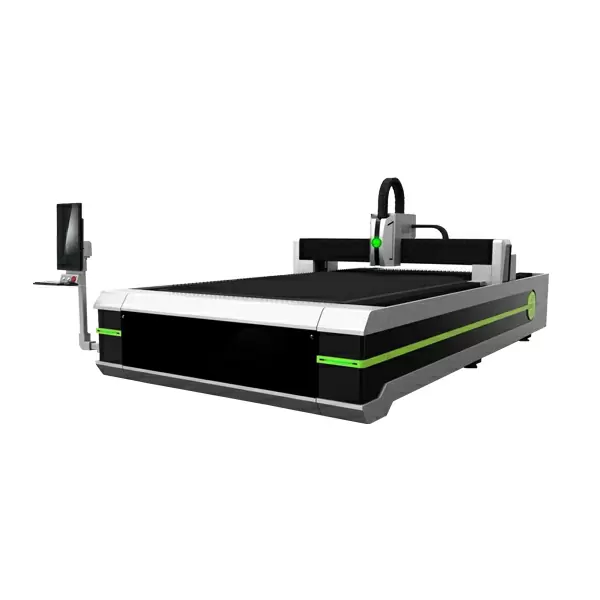Laser marking machines are widely used in various industries for permanent marking, engraving, or labeling of different materials. They utilize laser technology to create high-contrast, durable marks without the need for inks or physical contact. Laser marking machines offer precise and versatile marking capabilities.
Here’s an overview of laser marking machines:
Types of laser marking machines: There are different types of laser marking machines, including:
Fiber laser marking machines: These machines use fiber lasers to generate high-intensity laser beams. They are commonly used for marking metals, plastics, and other materials. Fiber lasers offer excellent beam quality, high speed, and reliability.
CO2 laser marking machines: These machines utilize CO2 lasers to produce infrared laser beams. They are suitable for marking non-metallic materials such as wood, glass, acrylic, rubber, and more. CO2 lasers are known for their versatility and ability to create deep, precise marks.
Nd:YAG laser marking machines: Nd:YAG lasers are solid-state lasers that can mark a variety of materials, including metals, plastics, ceramics, and more. They are known for their high peak power and are often used for deep engraving, annealing, or ablation.
Working principle: Laser marking machines work by directing a laser beam onto the surface of a material. The laser beam interacts with the material, causing localized heating or vaporization, which creates the desired mark. The marking process can be controlled through parameters such as laser power, speed, and frequency, allowing for precise control of the mark’s depth, size, and quality.
Benefits of laser marking machines:
Permanent and high-contrast markings: Laser marks are durable, resistant to wear, and provide high visibility.
Non-contact process: Laser marking does not involve physical contact with the material, minimizing the risk of damage or contamination.
Versatility: Laser marking machines can mark a wide range of materials, including metals, plastics, glass, ceramics, and more.
High precision and accuracy: Laser marking allows for fine details, small characters, and complex designs to be marked with precision.
Speed and productivity: Laser marking machines can achieve high processing speeds, enabling efficient production.
Applications of laser marking machines:
Product identification and branding: Laser marking is commonly used for adding logos, serial numbers, barcodes, QR codes, and other identification marks on products.
Automotive and aerospace: Laser marking is used for part identification, traceability, and aesthetic marking on components.
Medical devices: Laser marking is employed for marking surgical instruments, implants, medical packaging, and more.
Electronics: Laser marking is used for marking PCBs, electronic components, and consumer electronics.
Jewelry and luxury goods: Laser marking is utilized for personalization, branding, and quality assurance on precious metals and gemstones.
When considering a laser marking machine, factors to consider include the type of laser, power output, marking area size, software compatibility, ease of use, and maintenance requirements. It’s recommended to consult with manufacturers or suppliers to determine the most suitable laser marking machine for your specific needs.
Please note that technological advancements in laser marking machines are continually evolving, so staying updated with the latest developments in the field is essential. If you have any further questions or specific inquiries, feel free to ask!
What are some common maintenance requirements for laser marking machines?
Maintaining a laser marking machine is crucial to ensure its optimal performance and longevity. While specific maintenance requirements can vary depending on the manufacturer and model of the machine, here are some common maintenance tasks typically associated with laser marking machines:
Regular cleaning: Keeping the machine clean is essential to prevent dust, debris, or residue buildup that can affect the laser beam quality and performance. Fiber laser machine manufacturer Clean the external surfaces, lenses, mirrors, and other optical components regularly using the recommended cleaning procedures and tools provided by the manufacturer.
Lens inspection and cleaning: The focusing lens is a critical component that can impact the quality of the laser beam. Inspect the lens periodically for any signs of damage, scratches, or contamination. Clean the lens carefully using appropriate cleaning techniques to maintain its clarity.
Beam path alignment: Laser marking machines rely on precise beam alignment for accurate marking. Regularly check and align the beam path to ensure the laser beam is properly focused and directed onto the marking surface. Follow the manufacturer’s guidelines for alignment procedures.
Cooling system maintenance: Laser marking machines often incorporate cooling systems to prevent the laser source from overheating. Check the coolant levels, filters, and cooling system components regularly according to the manufacturer’s instructions. Clean or replace filters as needed to maintain proper cooling efficiency.
Power supply and electrical connections: Inspect the power supply and electrical connections periodically to ensure they are secure and free from any damage or loose connections. Check for any signs of overheating, unusual noises, or abnormal behavior. If any issues are detected, consult with a qualified technician for repairs or replacements.
Software and firmware updates: Stay updated with the latest software and firmware releases provided by the manufacturer. Regularly install updates to benefit from bug fixes, performance enhancements, and new features.
Laser source maintenance: If your laser marking machine utilizes a specific type of laser source, such as fiber laser or CO2 laser, follow the manufacturer’s recommendations for maintenance tasks related to the laser source. This may include tasks such as cleaning or replacing laser components, checking beam quality, or calibrating the laser.
Scheduled maintenance and professional servicing: Depending on the intensity of usage and manufacturer recommendations, it may be necessary to schedule periodic maintenance or servicing by trained professionals. This can involve comprehensive inspections, alignments, calibrations, and other specialized tasks to ensure the machine’s optimal performance.
Remember, it’s important to consult the user manual and maintenance guidelines provided by the manufacturer of your specific laser marking machine for detailed and accurate instructions tailored to your machine’s requirements. Adhering to the manufacturer’s recommendations and seeking professional assistance when needed will help you maintain the machine effectively and prolong its operational life. If you have any more specific questions, feel free to ask! Is there anything else I can help you with?

